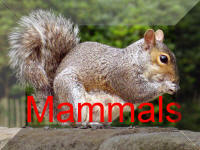Back To

Size 48 " To the Shoulder. Weight 11 -16 kg
Habitat
Dense Woodland and Scrub - Mainly Midlands and South. Muntjac preferareas withan abundance of thick cover with food present. Recently cut-back mixed deciduous forest with cover consisting of bramble, box, gorse, rhododendron, bamboo and fern readily supports this deer
Desription and Features
A small distinctive elusiove Deer with two distinctive features , - A round humped back and the short straight antlers of the male "Buck" The raised hindquarters give thefalse impression that their front legs are shorter.The antles converge on the face in a V -Shape. The buck has s a prominent black V shape on the face which begining just below the eyes and terminates at the top of the pedicles. T. In the Doe this is absent in the , the face being flatter with a dark kite-shaped mark on the forehead.
The coat or "pelage" can vary though usually the Summer Coat (April - November) is a shiny, bright chestnut-red. The Winter Coat ( November - March ) is dark brown to grey while the undersides remain white.
The Upper jaw of this deer species contains teeth which are tusk like and these can be usee as weapons. The Muntjac is a introduced species first appearing at Woburn - The Duke Of Bedfordshire Estate . Unlike British native deer there is no distinct breeding season and does caan give birth every 7 months
Diet
Muntjac feed in bouts lasting between 30 to 40 minutes, Feeding normally occurs every three to four hours.depending on food availability. As these deer are ruminants, they retreat to cover and chew the cud. Being practiced at adapting to most environments, Muntjac have developed undiscerning feeding habits. Predominantly browsers, they will take advantage of their diverse habitats, readily eating ivy, bramble, grasses, herbs, fruit (especially apples), nuts, berries, fungi, flowers (both wild and cultivated), vegetables and coppice. Muntjac may feed on plants normally harmful to other animals Eg: Yew leaves and berries ,Dogs Mercury. Bluebells, primroses, honeysuckle and orchids
